A ray of light is incident obliquely on an optical boundary and further suffers successive refractions at various optical boundaries as shown in the figure below. Compare the refractive indices of medium 1,2 and 3
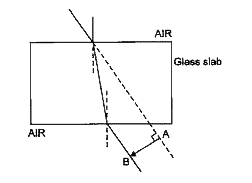
μ1>μ2>μ3
μ1=μ2=μ3
μ1<μ2<μ3
μ1μ2<μ3
The correct Answer is:B
Variation in path of light due to different refractive index
Topper's Solved these Questions
Similar Questions
A ray of light is incident obliquely at a boundary separating two media . What is its behaviour if (1) the refractive index of the second medium is grater than that of the first medium (2) the refractive index of the first medium is greater that that of the second medium ? Draw the corresponding neat and labelled diagrams.
View SolutionA ray of light is refracted. Which medium a or b is optically denser than the other ?
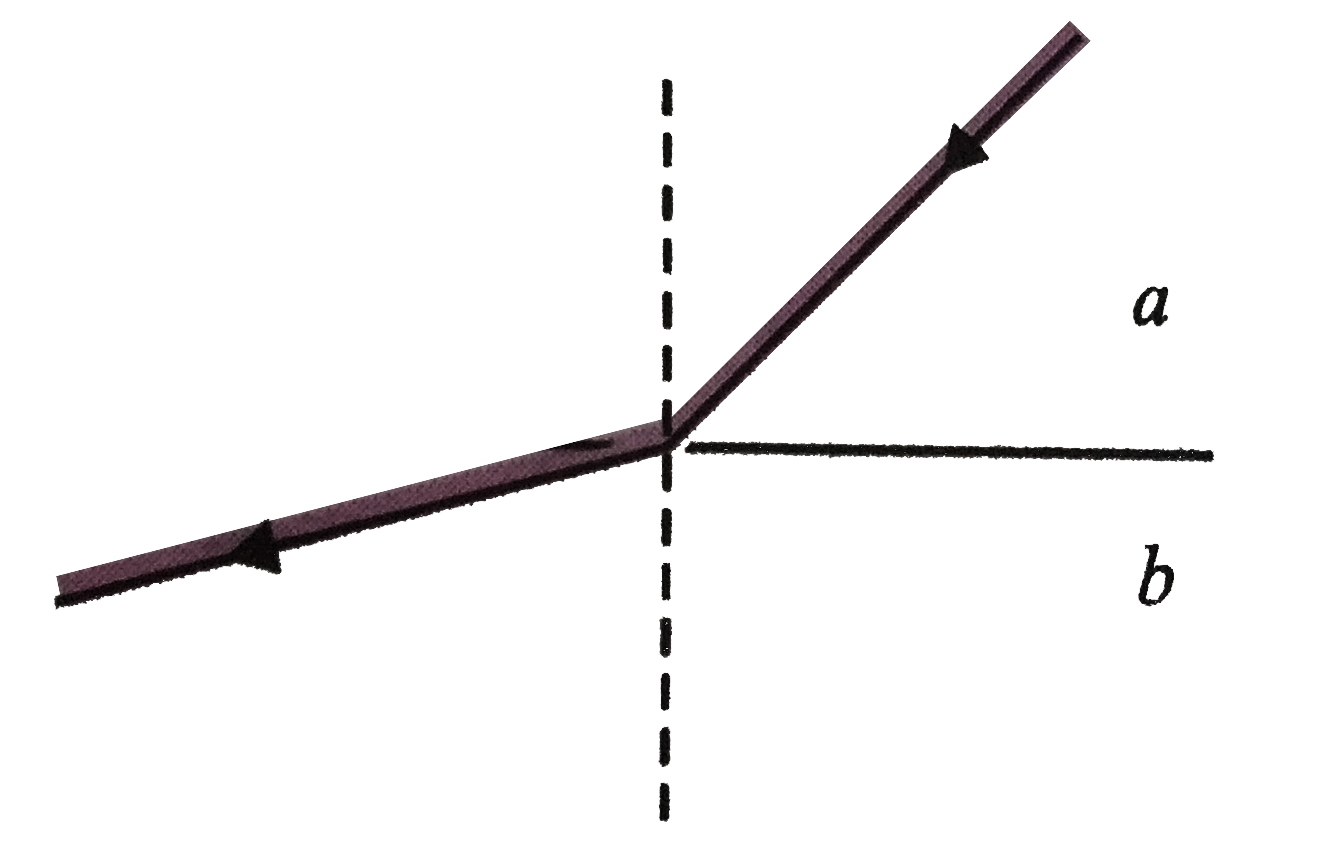
View Solution
Knowledge Check
Find the net deviation produced in the incident ray for the optical instrument shown in figure. (Take refractive index of the prism material as 2.)
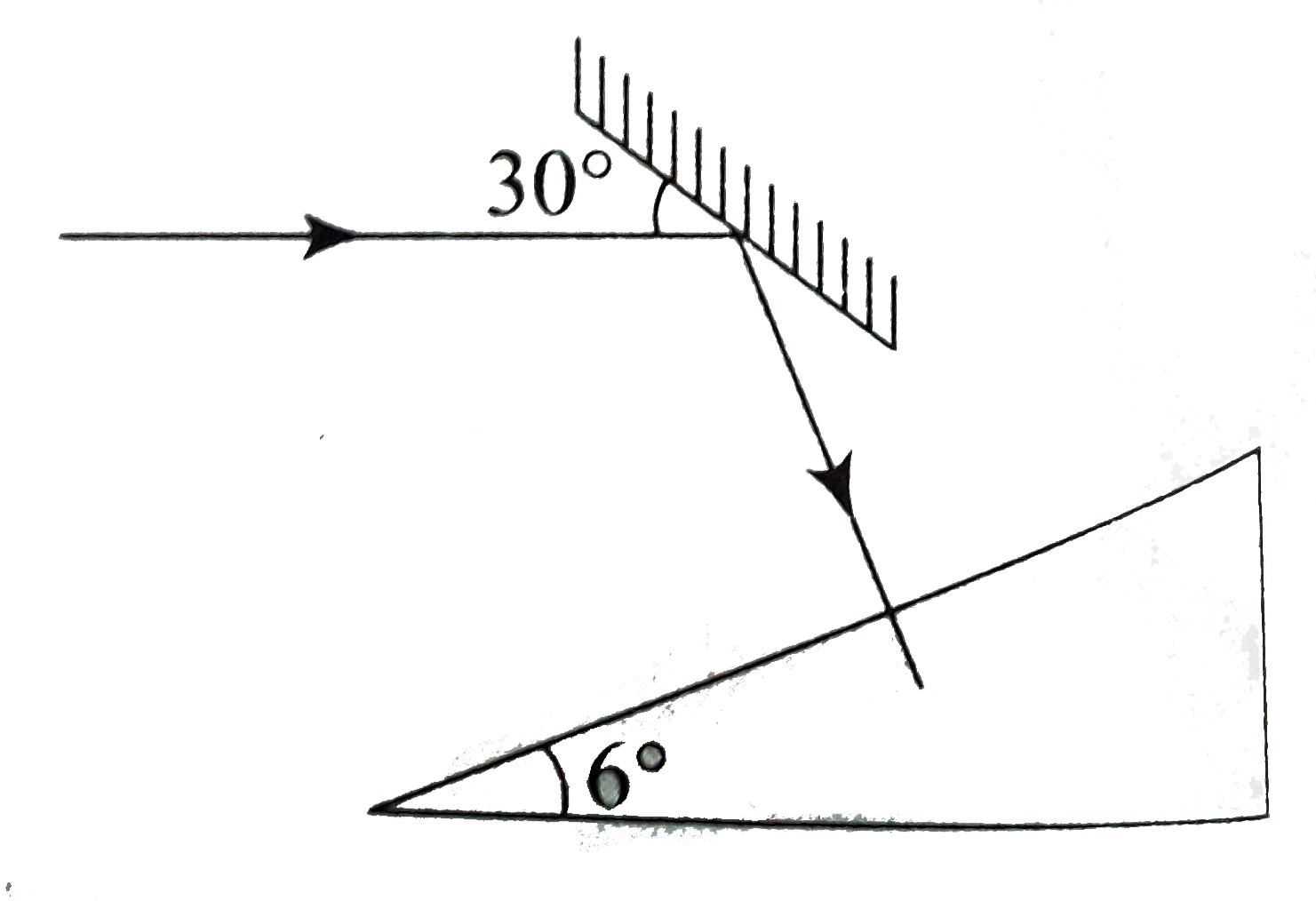 A66∘CWB66∘ACWC54∘ACWD54∘CW
A66∘CWB66∘ACWC54∘ACWD54∘CWA ray of light is incident obliquely on medium 1 and then passes through two media namely 2 and 3 before emerging into medium 1 again.
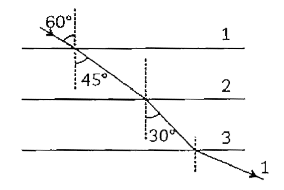
The refractive index of medium 3 respect to medium 1 is:A12B√32C1√2D√3A ray of light is incident on a medium at an angle i. It is found that the reflected ray is at right angles to the refracted ray . The refractive index of the medium is given by
AsiniBcosiCtaniDcosec i
Find the net deviation produced in the incident ray for the optical instrument shown in figure. (Take refractive index of the prism material as 2.)

View SolutionTwo different transparent media of different refractive indices are placed together as shown in the figure given below. A ray of light enters the medium settled above at an angle of 45∘. Calculate the angle of refraction of light in the medium settled below. The refractive indices of upper and lower media are 1.22 and 1.44, respectively.
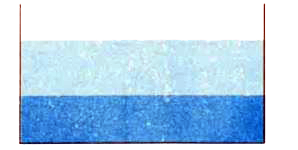
View SolutionWhen a ray of light strike the surface of seperation of two optical media _____ it does not suffer any refraction.
View SolutionA ray of light AO in vacuum is incident on a glass slab at angle 60∘and refracted at angle 30∘ along OB as shown in the figure.The optical path length of light ray from A to B is
View SolutionA ray of light AO is vacuum is incident on a glass slab at angle 60∘ and refracted at angle 30∘ along OB as shown in the figure.The optical path light ray from A to B is :
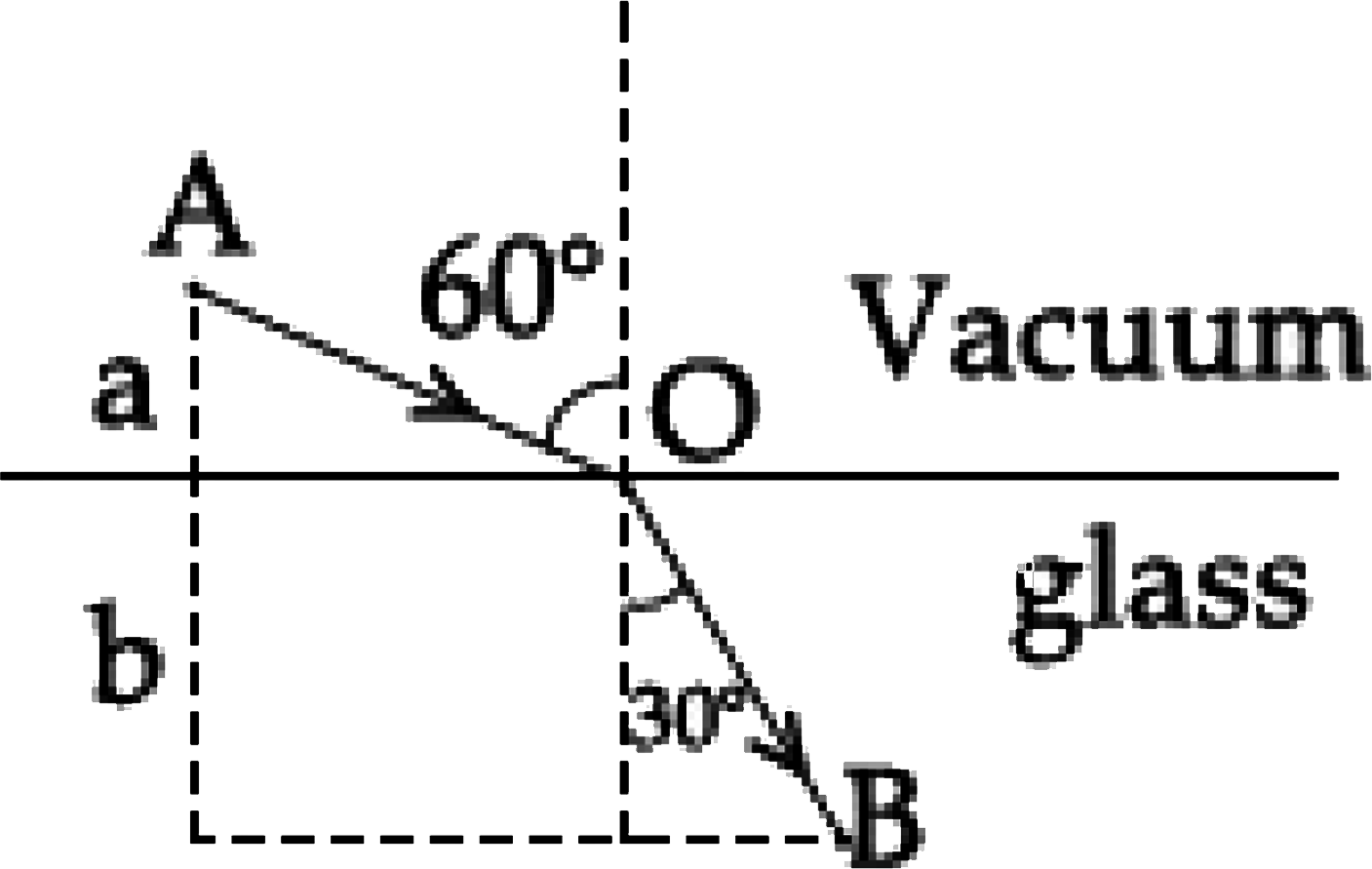
View Solution
